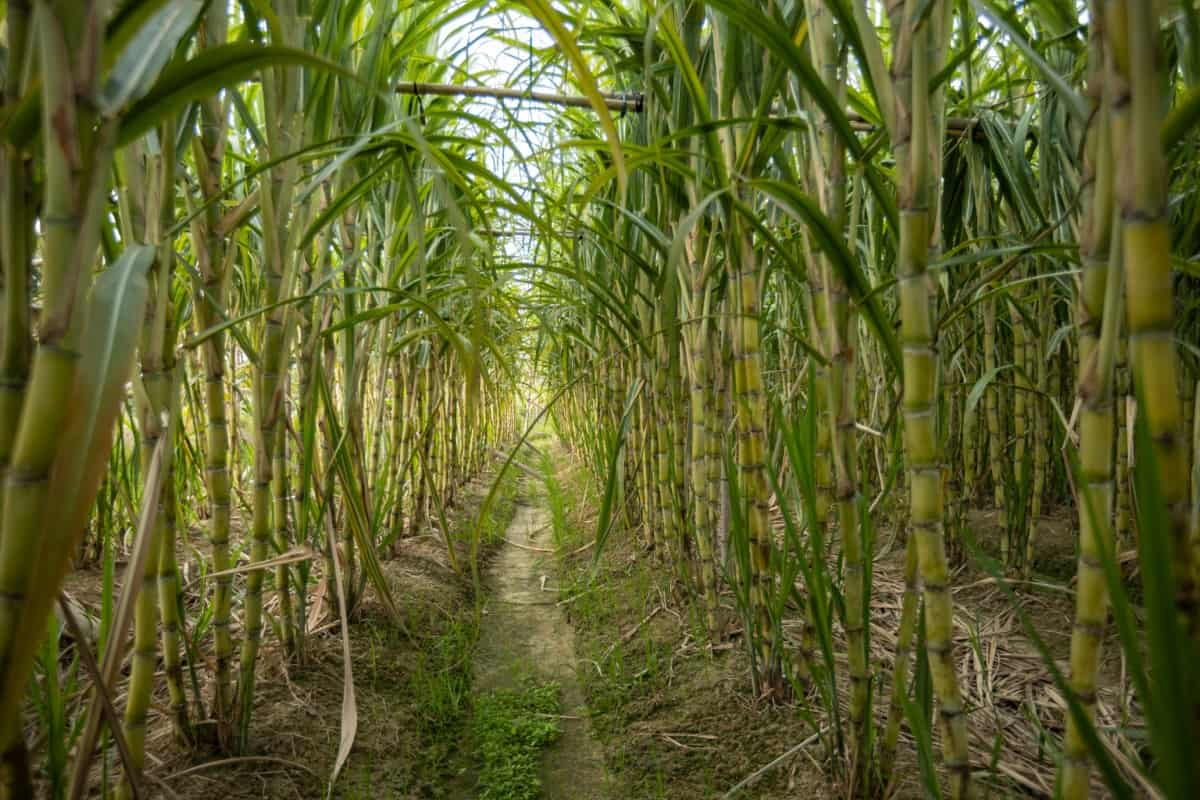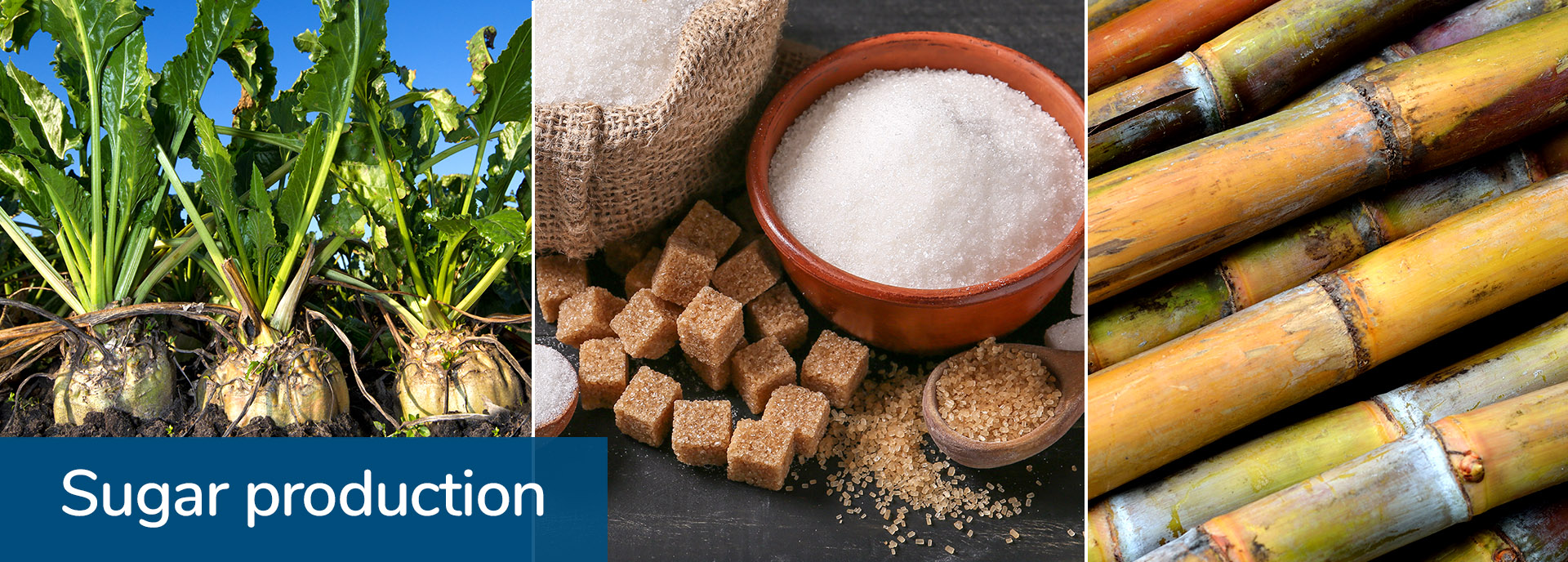Understanding the Diverse Roles of Sugar Cane in Agriculture and Manufacturing
Sugar Cane plays a crucial function in both farming and production. As a significant cash money plant, it impacts economic climates in exotic areas. Its convenience extends beyond sugar manufacturing to biofuels and naturally degradable products. Furthermore, sugar Cane growing advertises dirt health and wellness and biodiversity. The complete range of its contributions and prospective in sustainable practices remains to be explored. What innovative actions could boost its duty in future farming systems?
The Agricultural Relevance of Sugar Walking Stick
Sugar Cane plays a vital function in agriculture, adding substantially to the economic situations of lots of tropical and subtropical regions. This yard varieties prospers in warm climates, requiring enough sunshine and water, making it an ideal plant for these locations. Sugar Cane is mainly cultivated for its high sucrose content, which acts as a vital raw material for sugar production. In addition, it plays a considerable function in dirt preservation by avoiding disintegration and boosting soil fertility through its development cycles. Sugar walking stick's comprehensive origin system help in water retention, benefiting neighboring plants. The crop supports local environments by offering habitat and food for numerous wildlife varieties. Farmers frequently incorporate sugar Cane into crop rotation systems, improving biodiversity and agricultural resilience. The farming of sugar Cane not only fulfills regional food needs but likewise promotes sustainable agricultural techniques, promoting long-term environmental health and wellness in farming neighborhoods.
Financial Contributions of Sugar Cane Cultivation
Sugar Cane is usually neglected, its financial payments are substantial, especially in creating nations where it offers as a necessary cash plant. The growing of sugar Cane creates considerable income for millions of farmers, offering source of incomes and fostering rural development. As a flexible crop, it sustains various industries, including sugar manufacturing, biofuels, and drugs, as a result boosting local economies.
Sugar Cane growing advertises work production in farming industries, processing centers, and transport networks. It likewise contributes to fx incomes through exports, boosting nationwide economic stability. In areas such as Brazil and India, sugar Cane plays a pivotal duty in farming exports, boosting trade equilibriums.
Furthermore, the crop's byproducts, like bagasse and molasses, offer more economic opportunities, made use of in energy generation and pet feed. For this reason, the economic impact of sugar Cane expands beyond mere cultivation, affecting broader commercial and agricultural landscapes.
The Process of Sugar Manufacturing From Cane

The trip from sugar Cane to polished sugar entails several key stages that highlight the intricacy of sugar production. Originally, fully grown sugar Cane stalks are collected and delivered to processing centers. The Cane is then crushed to draw out juice, which consists of a high focus of sucrose. This juice goes through information, where contaminations are removed, usually utilizing lime and heat
Next, the clarified juice is evaporated to concentrate the sugar web content. The resulting syrup is then subjected to condensation, permitting sugar crystals to form. These crystals are divided from the continuing to be syrup through centrifugation and cleaned to eliminate any type of residual molasses.
The final stage includes refining, where sugar crystals are more purified and blonde, leading to the white granulated sugar commonly made use of in food products. This precise procedure underscores the detailed journey from raw Cane to the sugar that plays an essential duty in numerous cooking applications.
Sugar Cane as a Source of Biofuels
As interest in renewable power resources expands, sugar Cane has actually arised as a significant prospect for biofuel manufacturing. The plant's high sugar material enables efficient fermentation procedures, converting sugars right into ethanol. This biofuel functions as an eco-friendly option to fossil fuels, decreasing greenhouse gas exhausts and promoting energy sustainability.
Nations like Brazil have actually lengthy made use of sugar Cane for ethanol, developing considerable manufacturing infrastructure that sustains both domestic power needs and international export. The farming of sugar Cane for biofuel has likewise created economic chances, particularly in rural areas, where it produces employment and supports neighborhood farming.
Sugar Cane biofuels can be integrated right into existing gas systems, making them a useful option for shifting away from standard energy resources. As technological advancements continue to improve production effectiveness, sugar cane's function in biofuel advancement is positioned to expand, even more adding to global efforts toward eco-friendly energy fostering.
Innovative Uses Sugar Cane in Biodegradable Plastics
An expanding variety of manufacturers and researchers are discovering cutting-edge uses of sugar Cane in the manufacturing of biodegradable plastics. Sugar cane, abundant Continued in sucrose, can be refined to develop polylactic acid (PLA), a biopolymer that serves as a choice to petroleum-based plastics. This bioplastic can be used in various applications, consisting of packaging, non reusable flatware, and farming movies.
Making use of sugar cane-derived PLA provides a number of advantages, such as decreased dependence on nonrenewable fuel sources and the potential for lower carbon discharges during manufacturing. Furthermore, sugar walking cane's sustainable nature makes it an enticing choice in the mission for lasting products. Recent innovations in processing techniques have actually improved the effectiveness and cost-effectiveness of generating these bioplastics, cultivating higher fostering in the market. As the need for green options grows, sugar Cane attracts attention as a valuable source in the change towards greener production methods.
Ecological Advantages of Sugar Cane Farming

On top of that, sugar Cane needs much less water compared to other crops, making it ideal for cultivation in deserts. Efficient use of plant residues, such as bagasse, can minimize waste and supply renewable resource sources. Moreover, sugar Cane farming can help with the establishment of agroforestry systems, developing a synergistic relationship between trees and crops. These methods not only protect the environment yet additionally advertise lasting farming techniques, eventually benefiting neighborhood neighborhoods and environments.
The Future of Sugar Cane in Sustainable Practices

The potential for sugar Cane to you can try this out contribute to eco-friendly energy resources is acquiring grip. Biofuels stemmed from sugar Cane can significantly decrease carbon exhausts contrasted to fossil fuels, lining up with global environment goals. In addition, improvements in waste monitoring enable the utilization of by-products, further decreasing ecological influence.
Research right into drought-resistant sugar Cane selections is likewise underway, offering resilience against environment adjustment. As stakeholders throughout the sector embrace these lasting techniques, sugar Cane is positioned to play a crucial role in fostering farming sustainability, ensuring its significance in future markets and adding favorably to ecological balance.

Regularly Asked Inquiries
Just How Does Sugar Cane Affect Soil Health and Fertility?
The impact of sugar Cane on dirt health and wellness and fertility is substantial. Its considerable origin system you could try these out improves dirt structure, while natural matter from decaying fallen leaves adds necessary nutrients, advertising overall fertility and supporting varied microbial life.
What Are the Labor Problems for Sugar Cane Workers?
Labor problems for sugar Cane employees vary commonly, typically identified by lengthy hours, low incomes, and unsafe settings. Several face obstacles such as absence of accessibility to healthcare and insufficient safety measures versus unsafe conditions.
Can Sugar Cane Be Expanded in Non-Tropical Environments?
Sugar Cane normally thrives in tropical climates because of its warm and humidity demands. However, specific non-tropical areas might efficiently cultivate it through certain agricultural techniques, though yields and quality might be considerably decreased.
What Vermin Generally Endanger Sugar Cane Crops?
Insects threatening sugar Cane plants consist of the sugarcane borer, aphids, and nematodes. These microorganisms can substantially impact plant yield, requiring effective pest management approaches to assure healthy growth and make the most of farming performance.
Just How Does Sugar Cane Cultivation Influence Citizen Communities?
The growing of sugar Cane considerably affects local areas by offering employment possibility, boosting financial growth, and influencing social structures. Additionally, it can cause ecological challenges, impacting farming techniques and area wellness in the region.
Sugar Cane is primarily cultivated for its high sucrose content, which offers as an essential raw material for sugar manufacturing. Farmers commonly incorporate sugar Cane into crop turning systems, improving biodiversity and agricultural durability. The journey from sugar Cane to refined sugar involves numerous crucial phases that highlight the complexity of sugar production. The final phase includes refining, where sugar crystals are more purified and blonde, resulting in the white granulated sugar frequently made use of in food items. The plant's high sugar web content makes it possible for efficient fermentation processes, transforming sugars into ethanol.